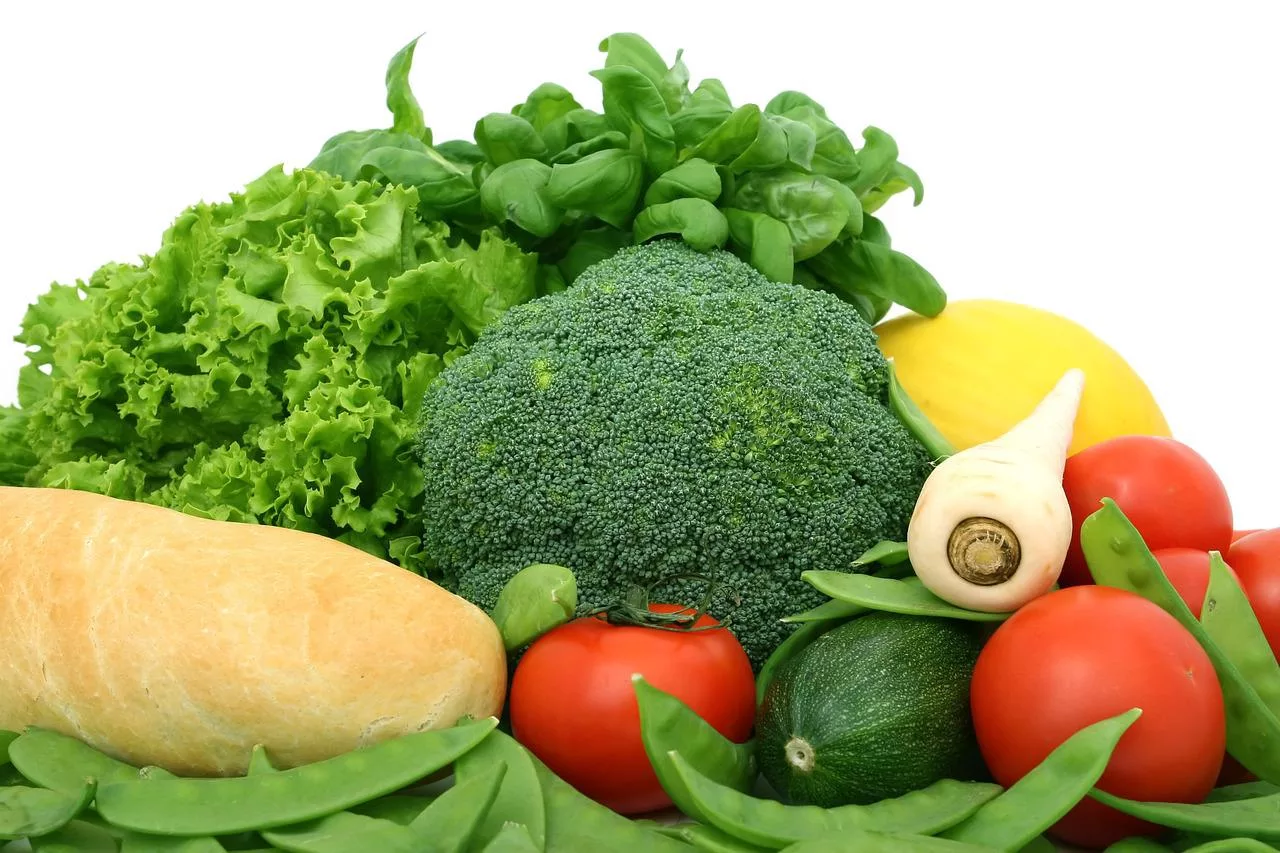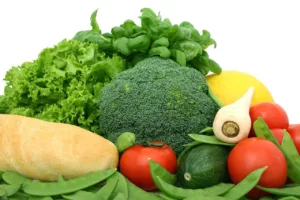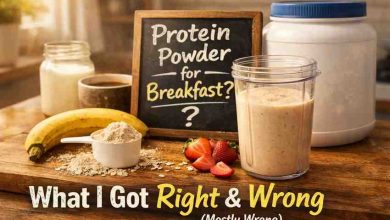

I Didn’t Know What “Healthy” Meant—Until My Jeans Stopped Fitting
I didn’t set out on a “health journey.”
I just wanted to zip up my favorite pair of jeans without needing to do the jump-wiggle-shimmy-dance. You know the one. That desperate, cardio-level ritual we pretend isn’t happening every morning.
That was the moment. The button popped open mid-walk down the hallway at work.
In front of Tom. From accounting.
He pretended not to notice. I pretended not to die inside.
That night, I Googled:
“How to follow a healthy diet.”
And thus began my totally ungraceful, trial-and-error-filled saga of figuring out what that actually meant.
Let’s Get One Thing Straight: I Thought I Knew
I mean, I wasn’t living off Cheetos and Mountain Dew (okay… not exclusively).
I ate salads sometimes. Bought almond milk once. Watched fitness TikToks while eating Oreos.
That counts, right?
But somewhere between the “kale smoothie phase” and the “low-carb-makes-me-hate-everything” phase, I realized — I was confusing healthy eating with diet culture nonsense.
So if you’re hoping for some picture-perfect, Pinterest-worthy food plan?
Buckle up. I’m not that girl.
But if you’re cool with a messy, honest guide from someone who actually lived it?
Welcome to the chaos.
1. “Healthy” Doesn’t Mean Perfect — and Thank God for That
The biggest lie I bought into? That a healthy diet means clean eating 24/7.
No sugar, no carbs, no joy. Basically… eat air. 😂
Here’s what actually happened when I tried that:
-
I became obsessed with food.
-
I’d restrict all week, then binge every weekend.
-
I cried once over a bagel.
Not my finest moment.
Here’s what worked instead:
I started aiming for balance. Not perfection.
And yeah, that sounds cliché — but in real life, it meant:
-
80/20 rule: 80% whole foods, 20% whatever keeps me sane (yes, that includes tacos).
-
No more “good” or “bad” foods — just “more often” and “less often.”
-
Letting go of guilt. Like actually. If I ate ice cream, I enjoyed the hell out of it.
2. My Gut Hated Me — Until I Figured Out the Basics
I didn’t realize half of my brain fog, mood swings, and random bloating came from how I was eating.
It wasn’t until I actually paid attention to what food was doing to my body that things started making sense.
What helped the most?
-
Hydration before caffeine (seriously, this changed my mornings).
-
Protein with every meal — stopped me from crashing by 3 PM.
-
Greens I actually liked (spoiler: arugula is evil, spinach is the goat).
And yes, I messed it up a lot at first.
I tried celery juice for a week and hated everyone. Including myself.
But experimenting — tracking what made me feel good vs. garbage — gave me actual control.
Not some macro chart or diet book.
3. Cooking at Home Didn’t Turn Me Into Martha Stewart — but It Saved Me
I used to Uber Eats my feelings.
Bad day? Thai food. Good day? Sushi. Bored? Fries.
I wasn’t eating meals — I was outsourcing my life.
Learning to cook (ish) at home did a few wild things:
-
I saved $400 in one month.
-
I stopped guessing what was in my food.
-
I actually enjoyed eating again.
Now, don’t get it twisted — I still burn toast sometimes.
But here are the easy wins that helped:
-
One-pan meals (less mess, more yay)
-
Batch cooking protein on Sundays (shoutout to air fryer chicken)
-
Swapping sauces instead of meals (homemade yogurt dressing >>> bottled ranch)
And when I really didn’t want to cook?
I’d make snack plates — apple slices, turkey roll-ups, boiled eggs, nuts, hummus.
Fancy Lunchable vibes. Way underrated.
4. I Had to Break Up with My Scale
This one’s personal.
I weighed myself every. single. morning.
And if that number was up? I’d spiral. Restrict. Obsess. Hate.
What helped?
Hiding the scale for 6 months.
Instead, I measured progress by:
-
Energy levels
-
How my clothes felt
-
Mood swings (or lack of)
-
Whether I could walk up stairs without dying
Crazy thing? I actually lost weight during that time.
Because I stopped micromanaging myself and just lived better.
5. Emotional Eating Is Real (and Not Fixed by Carrot Sticks)
I used to eat when I was bored, sad, anxious, tired, lonely…
Basically all feelings except hunger.
The real switch didn’t come from willpower.
It came from awareness.
What worked for me:
-
Asking: “Am I hungry, or just trying to feel something?”
-
Taking 10 minutes before I grabbed food — sometimes I still ate it, but I chose it.
-
Finding non-food comforts: hot showers, walks, journaling, trashy TV, calling my sister
Look — food will always be emotional sometimes.
Birthday cake, anyone?
But knowing the difference between eating with emotion vs. eating emotions? Game-changer.
6. I Needed Support — Not a Shiny Meal Plan
Okay, hear me out:
I didn’t need another 30-day diet PDF.
I needed people.
Real humans who:
-
Didn’t judge when I ordered fries
-
Cheered when I hit 10k steps
-
Sent me air-fryer recipes at midnight
Whether it’s a Facebook group, a gym buddy, or your cousin who’s weirdly into nutrition — find your hype squad.
I joined a local walking group through Meetup, and honestly?
Half the time we just gossip and rant. But I move my body. I laugh. I feel good.
That’s healthy, too.
7. The Real Secret? It’s Never Just About Food
This part hit me hard.
I thought I had an “eating problem.”
Turns out, I had a self-worth problem.
A boundaries problem. A “not taking care of myself” problem.
Learning how to follow a healthy diet forced me to:
-
Sleep more
-
Say no to things draining me
-
Actually check in with how I was feeling
-
Prioritize joy, not just calories
And once I started doing that?
The food part started to feel easier.
Like, way easier.
FAQs I Wish Someone Answered Sooner
Q: Do I need to cut out sugar completely?
No. Sugar isn’t evil. Obsession is.
Q: What’s the best diet?
The one you’ll actually stick to — and enjoy.
Q: How do I stay motivated?
You don’t. You build habits for the days you feel unmotivated. (Motivation is flaky.)
Q: What if I mess up?
You will. Welcome to the club. The point is not stopping altogether.
Not Gonna Lie — It’s Still Messy. But It’s Mine.
Some days I meal prep like a wellness queen.
Other days I eat peanut butter off a spoon and call it dinner.
But now?
My jeans fit.
My brain works.
My heart’s softer to myself.
And that’s worth more than any number on a scale.
If you’re trying to figure out how to follow a healthy diet…
Please know it doesn’t look one way.
It doesn’t need to be perfect. Or Instagrammable.
It just needs to work for you.
You’ve got this. For real.



